|
|
|
 Joel's Blog Joel's Blog |
 Built-It Blog Built-It Blog |
 Video Roundup Video Roundup |
 Classes & Events Classes & Events |
 Work Magazine Work Magazine |
| Newer Entries... | |
 | CBN Wheels - The Next Generation of Grinding Technology - 10/12/2016 |
 | English Patternmaker's Paring Chisels - 10/05/2016 |
 | Wisner Tool - 09/28/2016 |
 | Krenov Quality Plane Irons - 09/14/2016 |
 | Gabba Gabba Hey! - 08/17/2016 |
 | Summer News! - 08/10/2016 |
 | The Unisphere - 08/03/2016 |
 | A Walk Up Fourth Avenue - 07/31/2016 |
 | The Joiner and Cabinetmaker - Free Downloads - 07/27/2016 |
 | Chisel Detective - 07/13/2016 |
 | Chairs from China - 07/06/2016 |
 | Architectural Woodwork and a Look at Thomas Moser - 06/29/2016 |
 | Two New Books for Tool Collectors - 06/22/2016 |
 | Which Festool Sander Should I Get? - Updated - 06/15/2016 |
 | A Thrilling Visit to the Pennsylvania Academy of The Fine Arts - 06/08/2016 |
 | Physical Graffiti - 06/01/2016 |
 | Sharpening With Diamond Stones - Conclusions - 05/25/2016 |
 | YouTube: Woodworking In Asia - 05/18/2016 |
 | The Saw-Book Quarterly January 1903 - 05/04/2016 |
 | Big Discounts on Festool Vacuums, Demo Days, and Sharpening Classes, and Surprise Sale Bin Stuff - 04/27/2016 |
| Older Entries... | |
|
Hours: M-F 9:00-5:00, closed Sat,Sun Our Guarantee & Return Policy Shipping and Sales Tax Info Privacy Policy Holiday Calendar |
|
Contact Us:
Email: support@toolsforworkingwood.com Phone: 800-426-4613 or 718-499-5877 Visit Us in Brooklyn: Directions to Our Showroom © 1999-2019 toolsforworkingwood.com Powered by 01 Inc. Coded entirely in NYC |



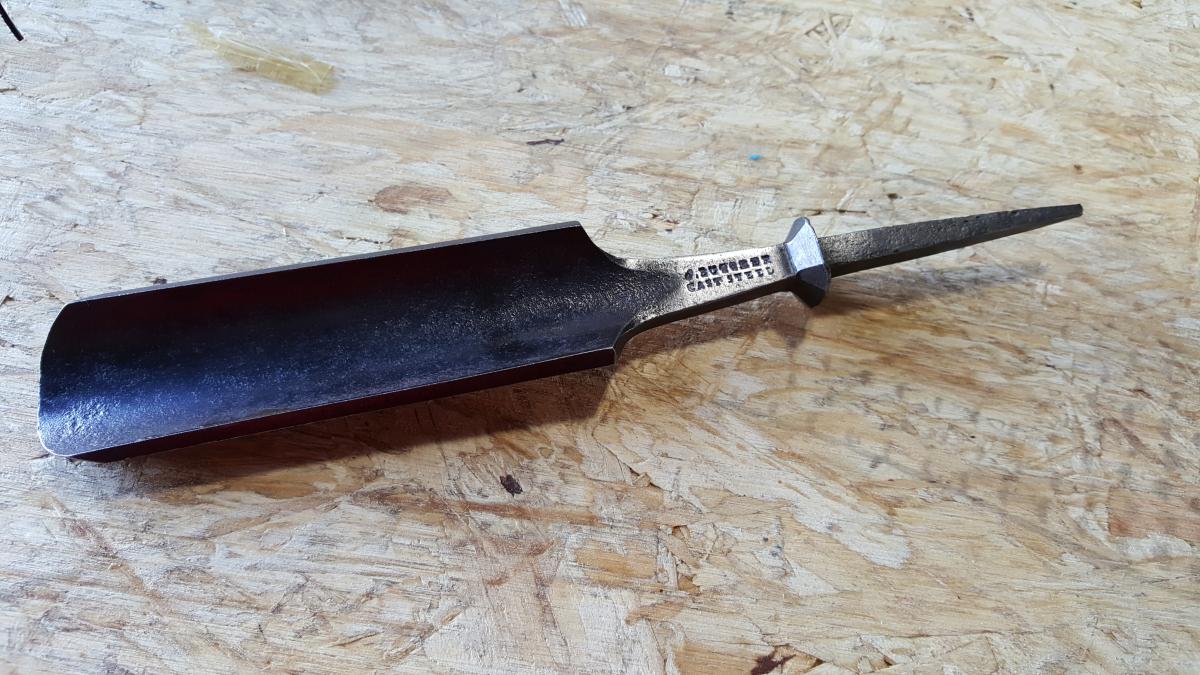 Earlier today a I was handed this tool - by a guy who found it in a basement and had no use for it.
Earlier today a I was handed this tool - by a guy who found it in a basement and had no use for it. 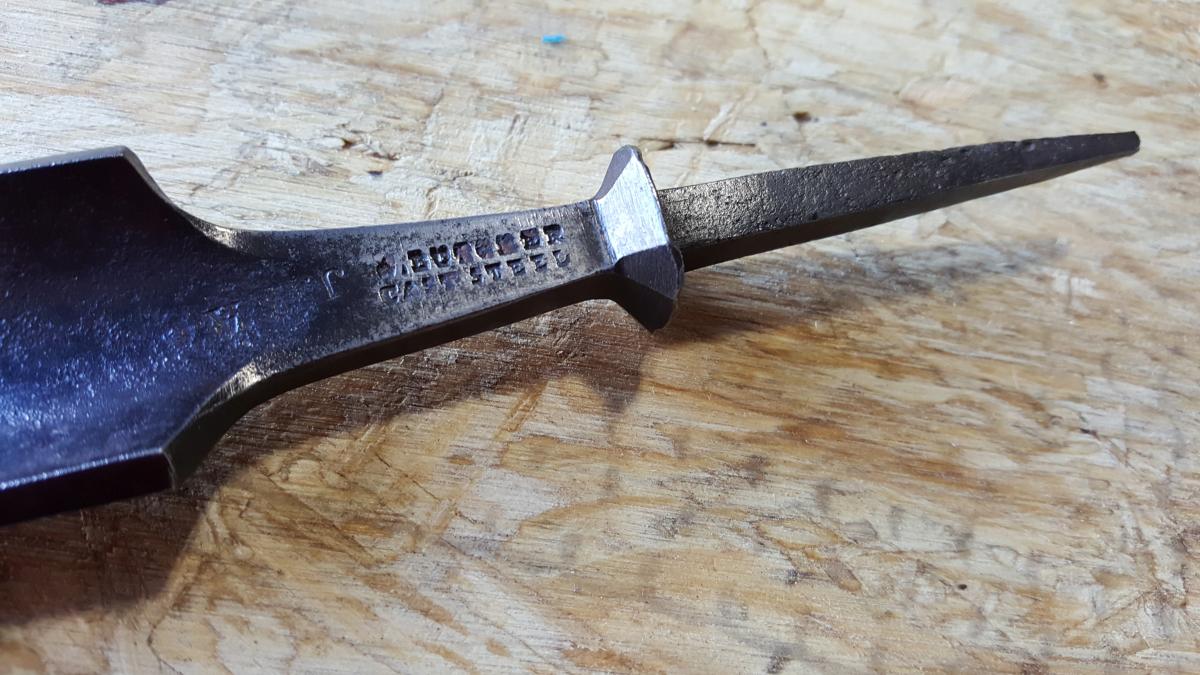 What kind of gouge? It's not a carving tool. The lines of the tool are wrong, and the curved grind in front it pretty useless for carving. It's a firmer gouge used by cabinetmakers. The curved nose makes it easy to shave off bits of wood to a line precisely.
What kind of gouge? It's not a carving tool. The lines of the tool are wrong, and the curved grind in front it pretty useless for carving. It's a firmer gouge used by cabinetmakers. The curved nose makes it easy to shave off bits of wood to a line precisely. 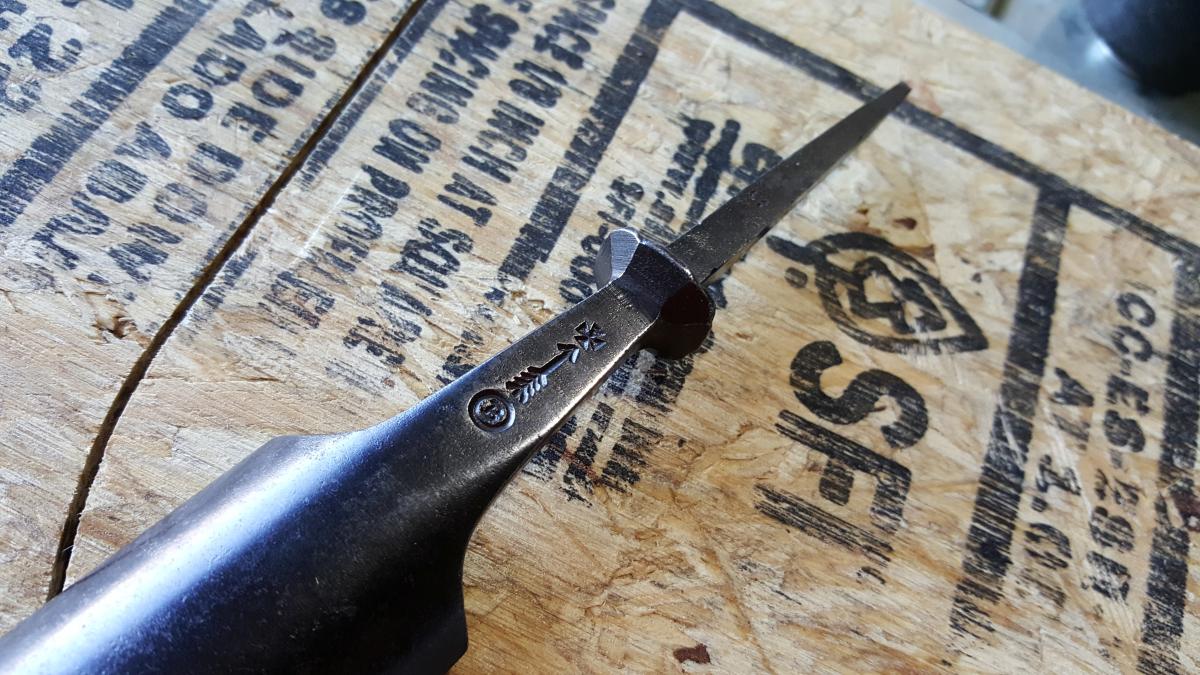 The front also bears a faint stamp, from either the retailer or the user. I'm a little confused by it. That part of the tool near the neck would be hardened but not so much that a stamp would not work. The deep maker's mark and brand were stamped when the tool was finished but not hardened.
The front also bears a faint stamp, from either the retailer or the user. I'm a little confused by it. That part of the tool near the neck would be hardened but not so much that a stamp would not work. The deep maker's mark and brand were stamped when the tool was finished but not hardened. 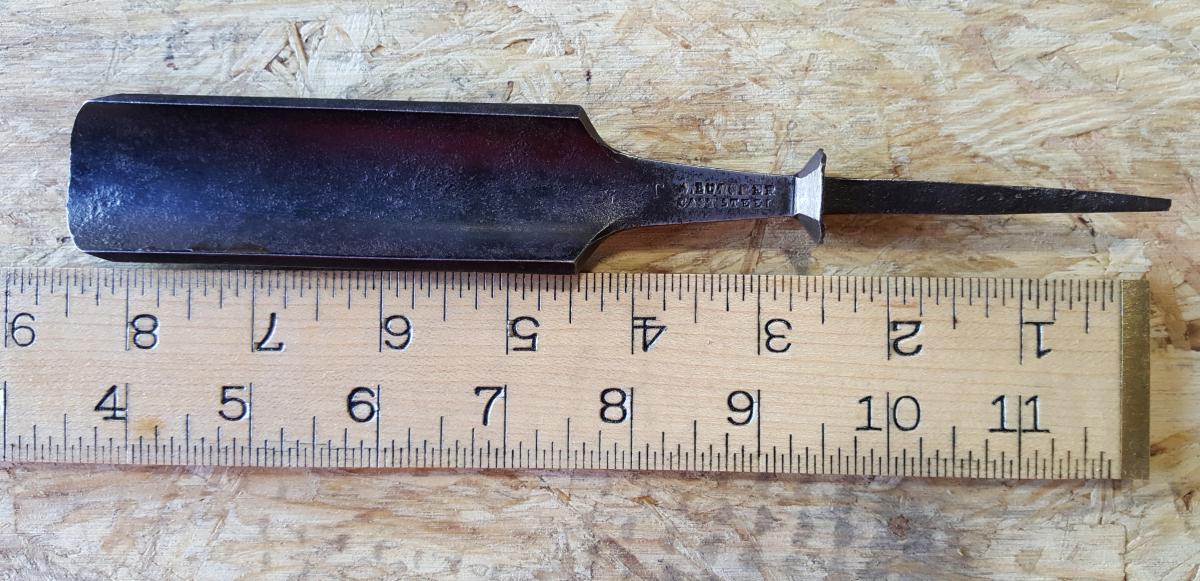 If we look closely at the cutting edge, we can see that it isn't perfectly curved and is worn a bit at the center. If you look carefully, you can see faint grind marks. This tool was used, but it was carefully used, and properly maintained for most of its life. There are clear grind marks on the neck that suggest that that part of the tool never rusted. The back of the tool has some evidence of putting, which suggest rust at some point but not a lot. The inside of the gouge is clear now but shows lots of pits. However, because the initials are fairly crisp I think the rust on this side was also pretty minimal. The rough inside texture of the gouge might come from pitting caused by rust that was subsequently removed, but more likely - based on the typical practice of the time - the gouge simply wasn't ground on the inside when it was manufactured.
If we look closely at the cutting edge, we can see that it isn't perfectly curved and is worn a bit at the center. If you look carefully, you can see faint grind marks. This tool was used, but it was carefully used, and properly maintained for most of its life. There are clear grind marks on the neck that suggest that that part of the tool never rusted. The back of the tool has some evidence of putting, which suggest rust at some point but not a lot. The inside of the gouge is clear now but shows lots of pits. However, because the initials are fairly crisp I think the rust on this side was also pretty minimal. The rough inside texture of the gouge might come from pitting caused by rust that was subsequently removed, but more likely - based on the typical practice of the time - the gouge simply wasn't ground on the inside when it was manufactured.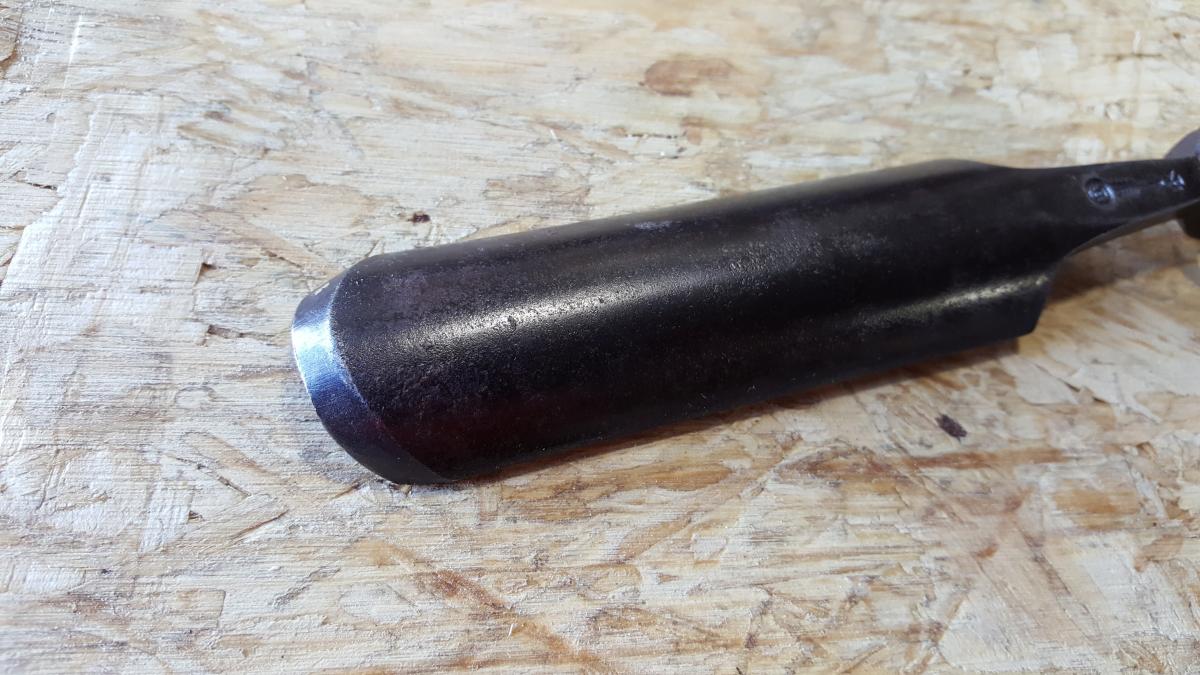
I don't remember the details, but I think the arrow stamp implies that this gouge was made for the British government.
blog on military norris plane
Butcher was a known Sheffield edge tool maker and the cross arrow and circle is their maker's mark - the military mark I think you refer to is the same as our ordnance survey (national mapping) land height mark - like an upside down V with added line across top and dividing line - seen on most tools bought by army up to about 1960s.
I would say this is a fine out-cannel cabinet maker/sculptor gouge "repurposed" as a turning tool (with new grind and maybe with a long handle added) and discarded when too short - this could be why the inside is corroded (always full of shavings, especially if green wood) and the outside not (always been 'cleaned up' by wear on the tool rest. But we can't say for sure unless you find the previous user.
regards from Sheffield
danny
http://contrib2.wkfinetools.com/TweedaleG/Butcher/01-History-Butcher.asp
Their manufactory still stands! Interestingly, the company specialized in export markets and their tools are much more common in the USA than in England. A lot of early 19th-century American plane makers used Butcher irons, until the American edge-tool industry got up to speed.